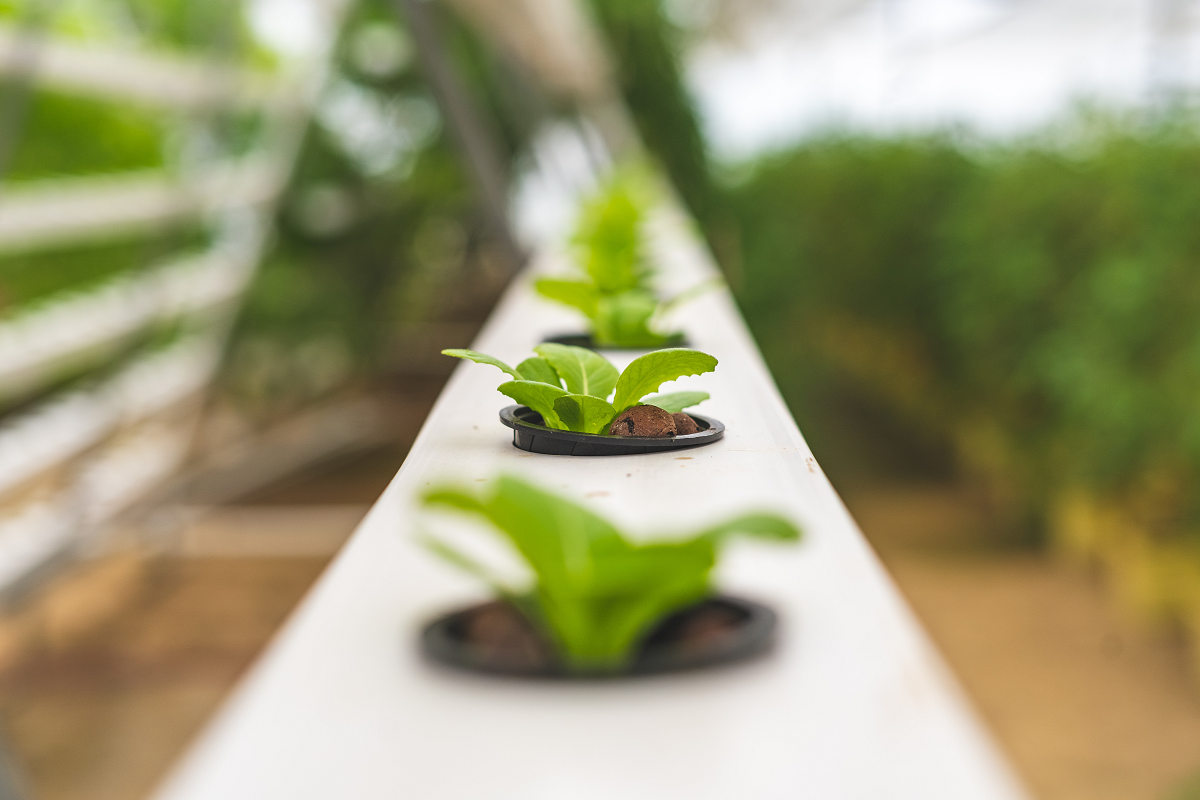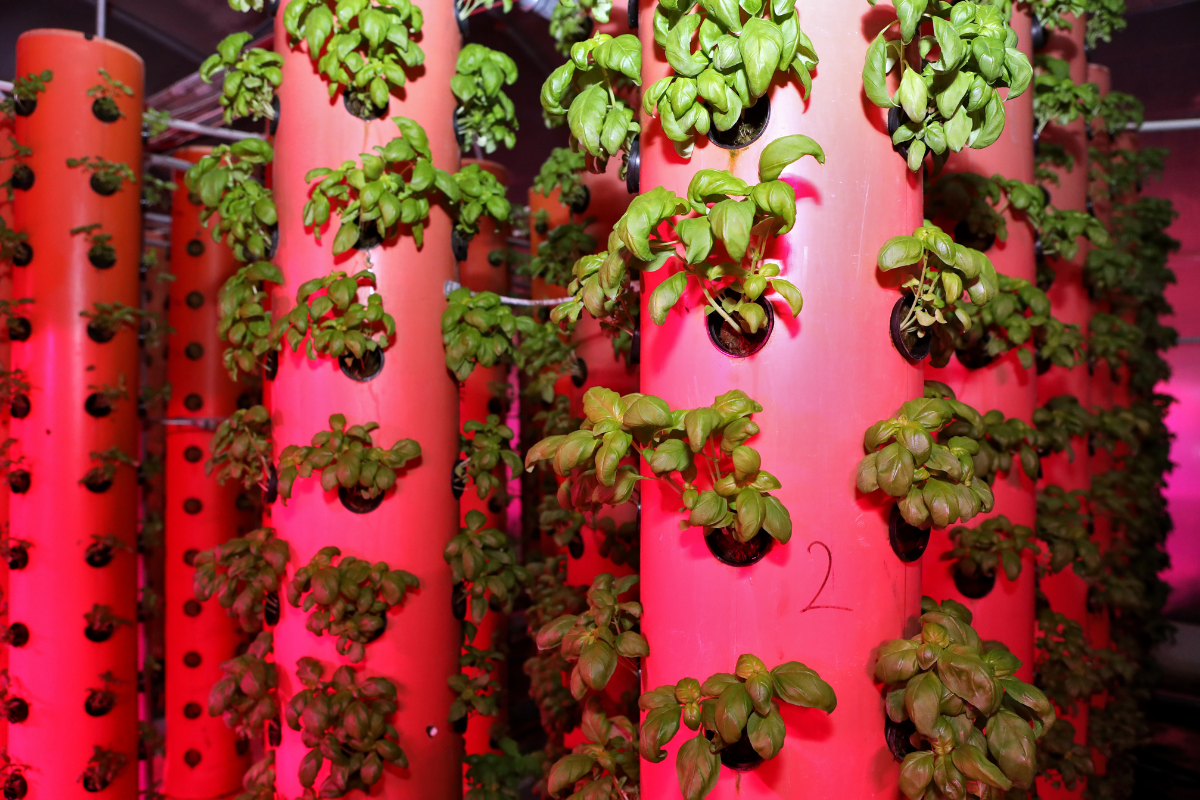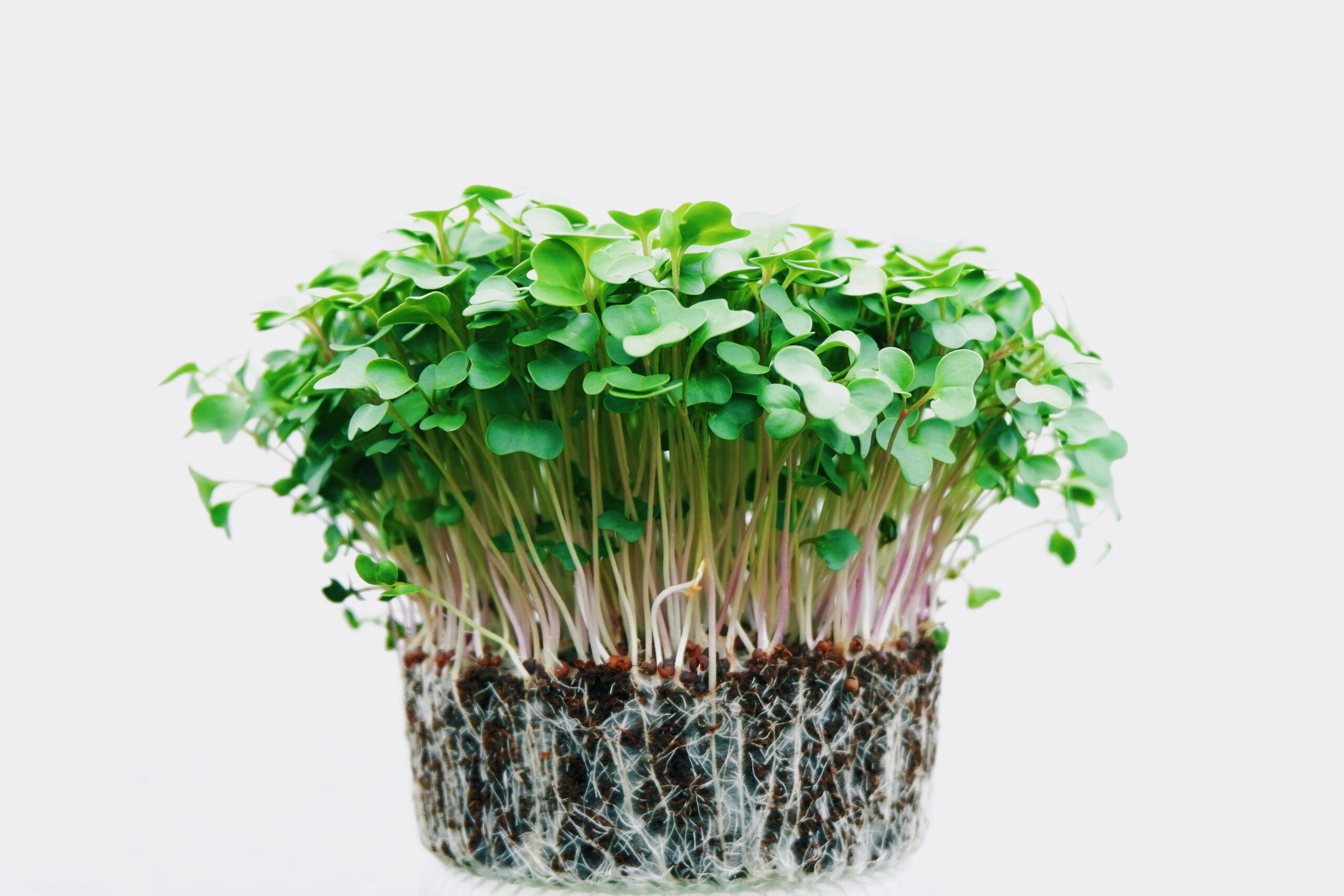Are you looking for a way to grow fresh, flavorful herbs all year round? Look no further than hydroponics! This innovative system allows you to grow plants without soil, using nutrient-rich water instead.
Not only does this save space and eliminate the mess of traditional gardening methods, but it also produces healthier plants with higher yields.
In this article, we’ll explore the top 10 herbs to grow in hydroponics systems.
Get ready to have a flourishing herb garden right in your own home!
Table of Contents
Basil
Basil is a popular herb that grows well in hydroponic systems. It’s known for its sweet, slightly spicy flavor and pairs perfectly with a variety of dishes.
One of the biggest advantages of growing basil in hydroponics is how quickly it can mature – often producing leaves within just a few weeks.
When growing basil in your system, make sure to keep the water temperature between 65-80°F and maintain a pH level between 5.5-6.5 for optimal growth.
Basil is a wonderful herb to grow indoors. It doesn’t require anything special. Flourishes greatly when all its minimal needs are rightly met.
It can grow year around in just water at your home without requiring any complicated setup. Basil is capable of growing from its seeds as well as its root.
Place the root cuttings of basil in a transparent jar of water and you can get an unlimited supply of fresh basil right at your home. Make sure to change the water on a weekly basis.
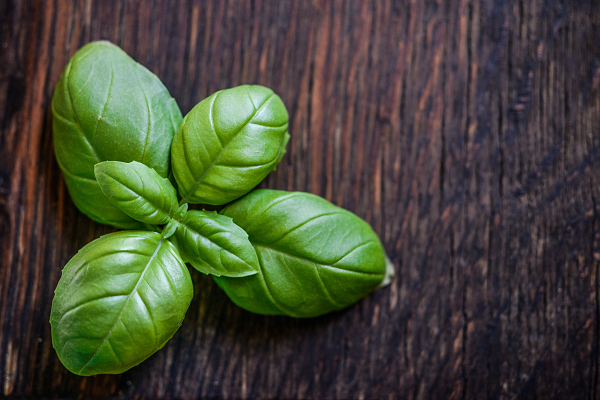
To harvest your basil, simply pinch off individual leaves as needed or prune entire stems to encourage new growth.
And don’t forget to use fresh basil in everything from homemade pesto to caprese salads for an extra burst of flavor!
Chives
Chives are a popular herb to grow in hydroponic systems. They are easy to cultivate and can add both flavor and visual appeal to dishes.
Chives have a mild onion-like taste that pairs well with many different types of cuisine, from salads to soups. Their long green stems also make them an attractive garnish for plates.
You can plant chives in a small pot and harvest them and the sprouts will keep growing giving you a continuous supply of fresh chives weekly.
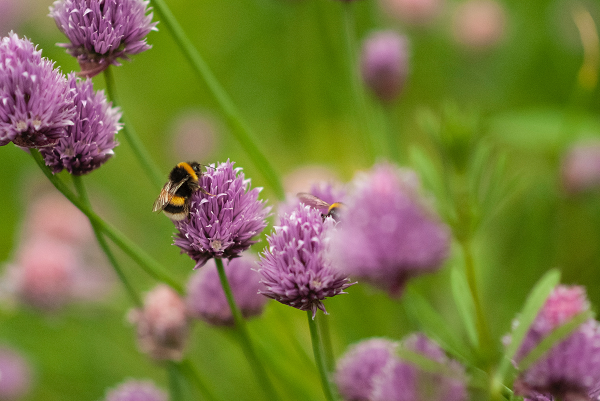
One benefit of growing it in a hydroponic system is that they grow quickly and can be harvested multiple times throughout their lifespan.
Simply cut the stems about an inch above the base when harvesting.
Chives are an excellent herb choice for any hydroponic garden enthusiast looking for something easy to grow with versatile uses in cooking.
Cilantro
Cilantro is a popular herb that adds a unique flavor to many dishes. With its distinct aroma and taste, it can be used in several cuisines like Mexican, Indian, and Thai.
One of the benefits of growing cilantro hydroponically is that you can have a constant supply of fresh cilantro leaves all year round.
This makes it ideal for those who love the taste but do not want to rely on store-bought herbs which may not always be fresh.
It grows the best at the highest range of temperature and it is best to keep them in a warmer area for greater reaping success. Once it is grown it can withstand even colder temperatures. Moderate watering works great.
To continually harvest the herb, selectively harvest only the larger leaves and make sure to leave at least 2/3rd of them.
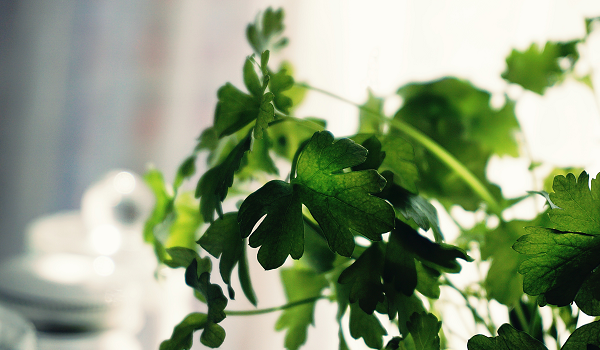
Cilantro plants do well in hydroponic systems since they require consistent moisture without being waterlogged. It’s best to plant them in net pots filled with clay pebbles or coco coir as these allow good drainage.
Growing cilantro hydroponically is an excellent way to enjoy this flavorful herb all year round while also ensuring its freshness and quality.
Dill
Dill is a popular herb grown in hydroponic systems due to its versatility and unique flavor. It belongs to the same family as celery, parsley, and carrots, but it has a distinct aroma and taste that sets it apart from other herbs.
One of the benefits of growing dill in hydroponics is that it requires less space than traditional gardening methods.
This makes it ideal for those who have limited outdoor space or live in apartments without access to an outdoor garden.
Dill sprouts can easily be grown as a thick blanket of new shoots or even as a singular large plant with multiple harvests.
They are capable of growing taller. It is recommended to have a larger pot. Once in a while add liquid nutrients since dill can quite use up the nutrients after multiple harvests.
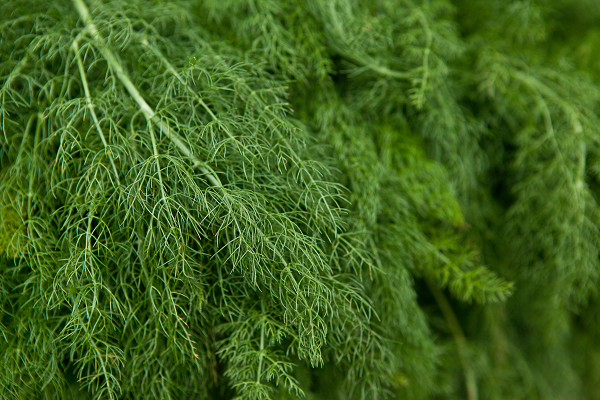
Dill can be used fresh or dried and is commonly used in pickling recipes, salad dressings, soups, and stews. Its leaves are delicate and feathery which makes them perfect for garnishing dishes.
In addition to its culinary uses, dill also has medicinal properties. It contains essential oils that aid digestion, relieve gas and promote overall digestive health. Dill tea made by steeping the leaves can also help soothe upset stomachs and reduce bloating.
Dill is an excellent herb to grow in hydroponic systems because of its many uses both culinary wise and medicinal wise.
Mint
Mint is a popular herb known for its refreshing aroma and taste. Growing mint in a hydroponics system can be an excellent addition to your indoor garden. With hundreds of varieties available, you will never run out of options.
Mint also requires ample light and nutrients, which are readily available in a well-maintained hydroponic setup.
You can easily grow mint in the water without needing to have any soil. Place the mint leaves in a half-filled bottle of water or a container and place it near the window.

One significant advantage of growing mint in hydroponics is that it eliminates the need for regular watering as compared to traditional gardening methods where plants require frequent watering due to evaporation and uneven distribution.
Moreover, since mint takes up plenty of space when grown conventionally in soil, using a vertical hydroponic system or NFT (nutrient film technique) allows you to make efficient use of limited space while also providing maximum oxygenation and nutrient absorption potential.
There are many ways you can enjoy fresh mint- add it to beverages like teas or cocktails, smoothies, salads, or even savory dishes like curries or soups. Give this versatile herb a try by planting some fresh cuttings today!
Oregano
Oregano is a versatile herb that can be grown in a hydroponics system. It’s a member of the mint family and has an earthy, slightly bitter taste with hints of sweetness. Oregano can be used both fresh or dried and is commonly used in Mediterranean cuisine.
Oregano requires moderate to high light intensity, so it’s recommended to use LED grow lights for indoor cultivation.
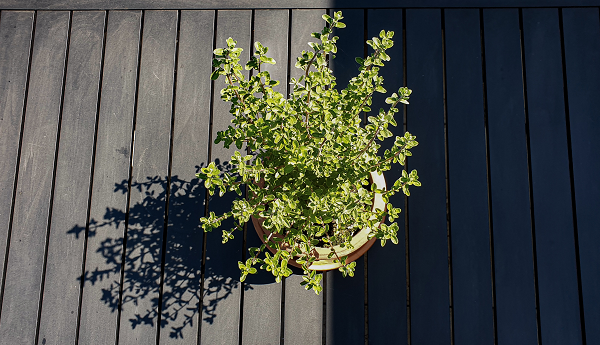
Oregano is packed with antioxidants, making it beneficial for overall health and well-being. Its essential oils have antibacterial properties that can help fight off infections such as respiratory infections and skin irritations.
In addition to its medicinal benefits, oregano makes a great addition to any dish because of its rich flavor profile. From pizza toppings to sauces and marinades – this herb adds depth and complexity to any recipe!
Parsley
Parsley is a popular herb that you can easily grow in a hydroponic system. It has bright green leaves and an attractive aroma that makes it an excellent addition to many dishes.
One of the reasons why parsley is such a great herb to grow hydroponically is because it grows quickly, which means you’ll have fresh herbs available whenever you need them.
Plus, growing your own parsley ensures that you have access to organic, chemical-free herbs.
Place the cut stems in a transparent jar of water and place it near your window
You will see branches and leaves coming out in 2 to 3 weeks of time
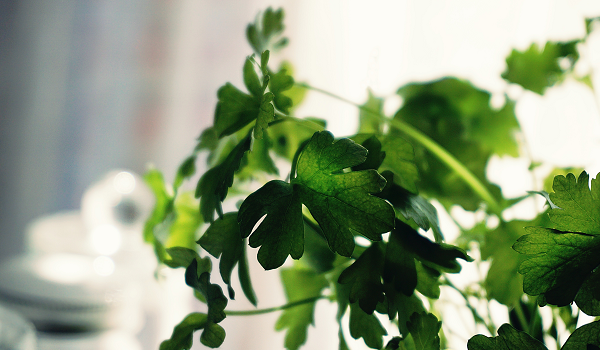
If you’re looking for a hardy herb with plenty of health benefits to add to your hydroponic garden or cooking recipes, then look no further than parsley!
Rosemary
Rosemary is a fragrant herb that’s often used in cooking due to its distinctive flavor. It also has some medicinal properties, making it a popular choice among herbalists. Growing rosemary in hydroponic systems can be very rewarding and easy.
Rosemary thrives in warm, sunny environments but can tolerate cooler temperatures as well. It requires consistent moisture levels and good drainage for optimal growth.
Hydroponics provides an ideal environment for growing this herb since you can control the water and nutrient levels easily.
When planting rosemary seeds or cuttings, use a well-draining growing medium such as vermiculite or perlite mixed with coco coir or peat moss. You should also add nutrients specifically designed for herbs to ensure proper growth.
Have a few stem cuttings of rosemary. Usually for better results chose bigger rosemary with thicker stems.
Place it in a transparent jar of water. In about 2 to 3 weeks’ time, you should be able to see roots emerging from the stem.
Once it roots out, place it in a small cup or a pot, and will it will clay pebbles and place them again in a jar of water. place them near the window to help them get enough sunlight. In 4 to 8 weeks you will have longer roots and multiple leaves branching out.
Change the water once or twice a month. In about 2 months rosemary would grow bigger. You can use some kind of support to help the plant grow. Once in a while use liquid nutrients for enrichment.
Generally, rosemary can’t tolerate water clogging. Though hydroponic method would work for giving few initial growth and leaves. It can’t be used indefinitely. After about 2 to 4 months of span, the roots will be black and dry. So it is best to transfer it to the after 3 months to the soil to continue growing the plant.
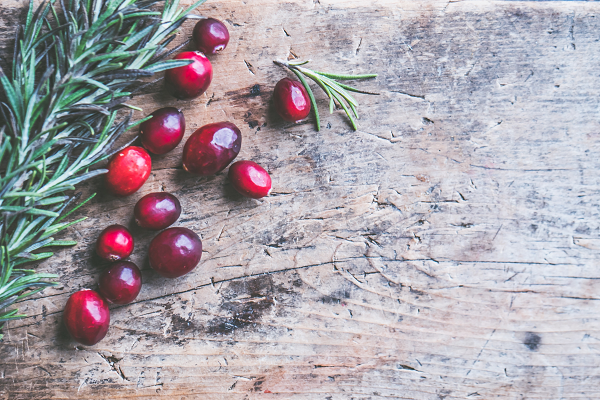
To support healthy root development, use net pots filled with clay pebbles so the roots have plenty of room to grow while allowing water to flow freely around them.
Harvesting rosemary regularly will encourage bushy growth and prevent woody stems from forming. Use sharp scissors or pruning shears when cutting off sprigs of leaves for culinary purposes or drying them out for later use.
Growing Rosemary hydroponically is an excellent way to enjoy fresh herbs all year round!
Thyme
Thyme is an aromatic herb that can be easily grown in a hydroponic system. It has a unique flavor and aroma, making it one of the most popular herbs in culinary use.
Thyme plants are small but mighty! They come in different varieties, including lemon thyme and creeping thyme, each with its own distinctive taste and scent. Thyme is also packed with vitamins and minerals like vitamin C, iron, calcium, potassium, and more.
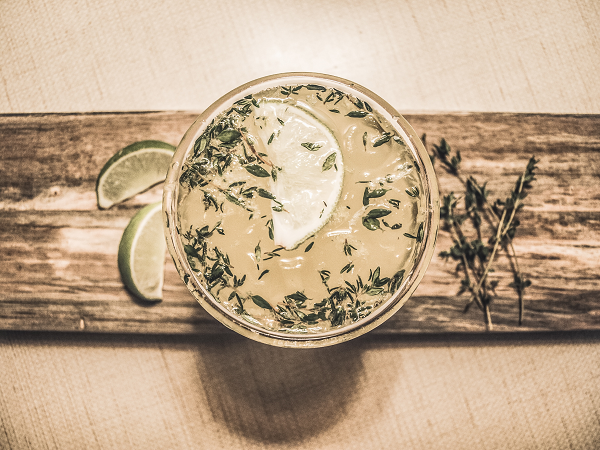
Growing thyme hydroponically requires minimal effort as long as you provide enough light (at least 12 hours per day). The plant’s roots need to have access to oxygen-rich water for optimal growth.
Once your thyme plants mature after about four months or so from planting seeds or cuttings, you can start harvesting them by snipping off the top leaves. Use fresh thyme to garnish dishes such as roasted vegetables or add dried thyme leaves to soups for extra flavor.
Growing Thyme in a Hydroponic system provides year-round access to this versatile herb that elevates any dish effortlessly while providing numerous health benefits
Conclusion
Hydroponic systems are an excellent way to grow herbs indoors without any soil. Growing herbs in a hydroponic system not only saves space but also provides fresh and flavorful produce throughout the year.
By growing your own herbs using a hydroponic system, you can control the environment and quality of your plants while reducing water usage and avoiding the use of harmful pesticides.
So if you’re looking for a new hobby that benefits both your health and the environment, consider starting your own herb garden with these top 10 herbs for hydroponics.
With some care and maintenance, you’ll be able to enjoy fresh herbs all year round!
